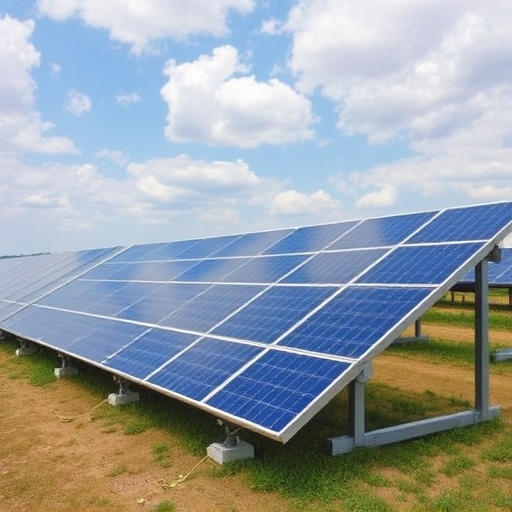Solar trackers significantly enhance solar power generation by dynamically tracking the sun's movement using sensors, motors, and algorithms. These devices adjust panel orientation on two axes, optimizing energy capture rates for both daily and seasonal changes. Key benefits include increased electricity production efficiency, making solar power systems with trackers more sustainable. Installation requires clear views and proper site preparation while future advancements in algorithms, machine learning, and smart grid integration are poised to revolutionize solar tracking technology.
Solar trackers are revolutionizing the way we harness solar power by following the sun’s movement throughout the day. This innovative technology has gained significant traction in the renewable energy sector, offering numerous advantages for maximizing efficiency and optimizing energy production. In this comprehensive guide, we’ll explore the inner workings of solar trackers, their benefits, different types, installation considerations, and future prospects, empowering you with insights into this game-changing Solar Power solution.
- Understanding Solar Trackers: How They Work
- The Benefits of Following Sun Movement for Solar Power Generation
- Types of Solar Trackers: A Comprehensive Overview
- Implementation and Installation Considerations
- Future Prospects and Innovations in Solar Tracking Technology
Understanding Solar Trackers: How They Work
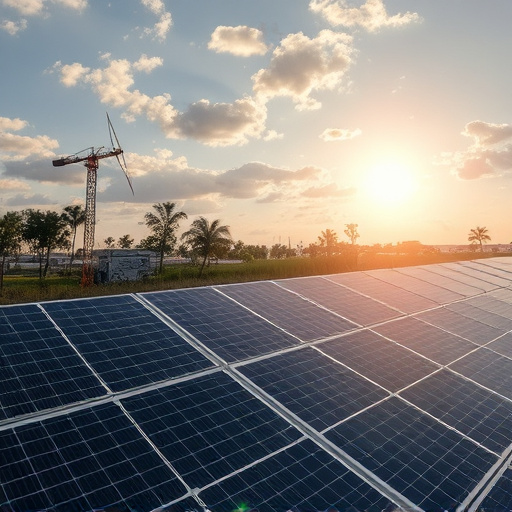
Solar trackers are innovative devices designed to maximize the efficiency of solar power systems by actively following the sun’s movement throughout the day and across seasons. They do this by utilizing a combination of sensors, motors, and sophisticated algorithms to orient solar panels in the direction of the sun, ensuring they receive the maximum amount of direct sunlight possible.
These trackers typically track the sun on two axes: one that adjusts for its daily arc across the sky, and another that accounts for seasonal changes in its elevation. This dual-axis tracking allows them to continuously position the solar panels at the optimal angle relative to the sun, thereby increasing energy capture and conversion rates. By harnessing this technology, solar power systems equipped with trackers can produce more electricity than their fixed counterparts, contributing to greater energy efficiency and sustainability.
The Benefits of Following Sun Movement for Solar Power Generation
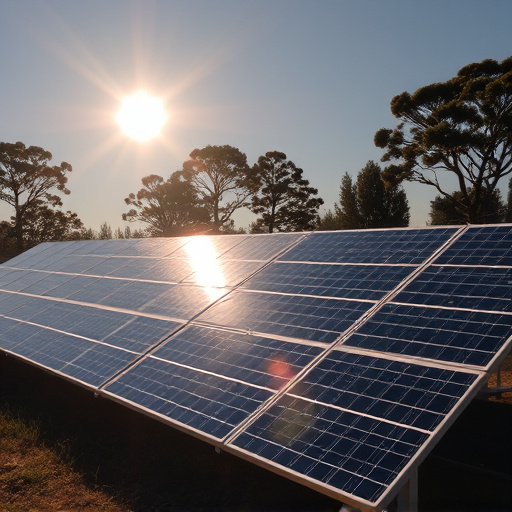
Solar trackers are a game-changer in the realm of solar power generation, revolutionizing how we harness the energy from the sun. By following the sun’s movement throughout the day and even across seasons, these advanced systems maximize sunlight exposure on solar panels. This simple yet innovative approach offers significant benefits for both residential and commercial-scale solar projects.
One of the key advantages is increased energy production efficiency. As the sun moves across the sky, its angle changes, and so does the intensity of the light reaching the panels. Solar trackers adjust to this natural cycle, ensuring that the panels are always positioned optimally to capture the most direct sunlight. This results in higher energy yields, as more photons are absorbed, leading to greater electricity generation without any additional cost or space requirements beyond the initial setup.
Types of Solar Trackers: A Comprehensive Overview
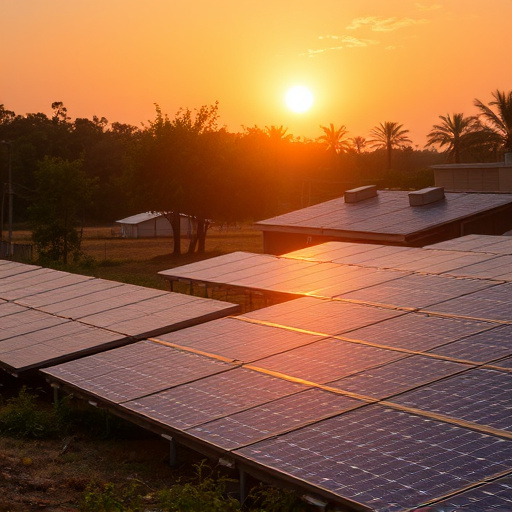
Solar trackers are an essential component of maximizing solar power generation, especially in environments with varying weather conditions and sun paths. These devices are designed to track the movement of the sun, ensuring that solar panels are always oriented towards it for optimal energy absorption. There are primarily two types of solar trackers: single-axis and dual-axis.
Single-axis trackers are the most common and cost-effective option. They rotate along a single axis, typically parallel to the ground, following the sun from east to west. This design is straightforward and efficient for residential and commercial applications. Dual-axis trackers, on the other hand, offer more advanced capabilities by rotating on two axes, allowing them to account for both the sun’s vertical and horizontal movement. This makes them ideal for regions with extreme seasonal changes in sunlight angles, ensuring maximum solar power generation throughout the year.
Implementation and Installation Considerations
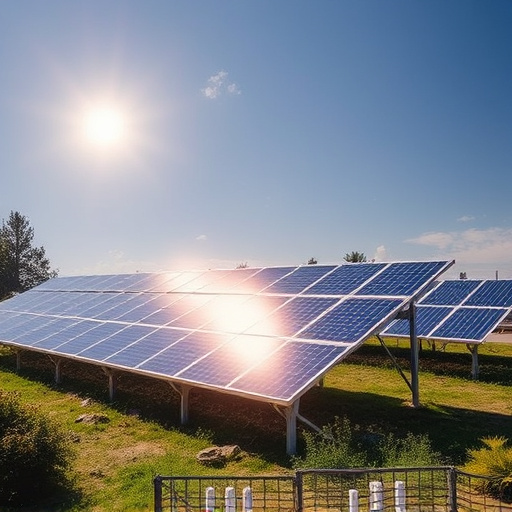
When implementing solar trackers, several crucial installation considerations come into play. These systems are designed to optimize sunlight absorption by continuously adjusting panel orientation, ensuring maximum energy capture throughout the day. As such, installations should account for clear, unobstructed views of the sky, with minimal interference from trees, buildings, or other structures that could cast shadows. Proper site assessment and planning are essential, especially in areas with varying weather patterns, to guarantee consistent performance.
Additionally, solar trackers require robust mounting systems capable of withstanding environmental conditions, including wind loads and weight fluctuations due to the tracking mechanism. Ground preparation is another vital step, ensuring stable foundations for the equipment. With careful consideration of these factors, solar power installations can achieve enhanced efficiency, making them a viable solution for sustainable energy generation.
Future Prospects and Innovations in Solar Tracking Technology
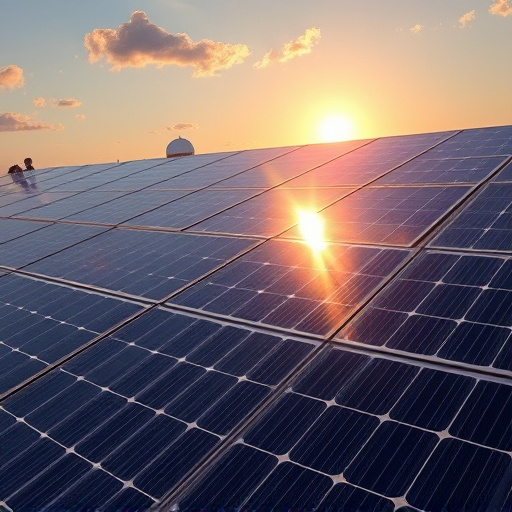
The future of solar tracking technology promises significant advancements, further optimizing the potential of solar power. Innovations such as advanced algorithms and machine learning are set to enhance the precision and efficiency of sun-tracking systems. These technologies enable panels to adjust in real-time, capturing maximum sunlight throughout the day and across varying weather conditions.
Additionally, integration with smart grids and energy storage solutions will revolutionize solar energy distribution. As tracking technology becomes more sophisticated, we can expect improved energy yield and reduced costs, making solar power an even more viable and attractive renewable energy source for both residential and commercial applications.
Solar trackers are a game-changer in maximizing solar power generation. By tracking the sun’s movement, these innovative systems enhance efficiency, ensuring optimal energy capture throughout the day. As technology advances, future prospects look bright for solar tracking, promising increased reliability and cost-effectiveness in renewable energy production. This evolving landscape is a testament to our ongoing commitment to sustainable solutions, moving us closer to a greener future powered by the sun.
